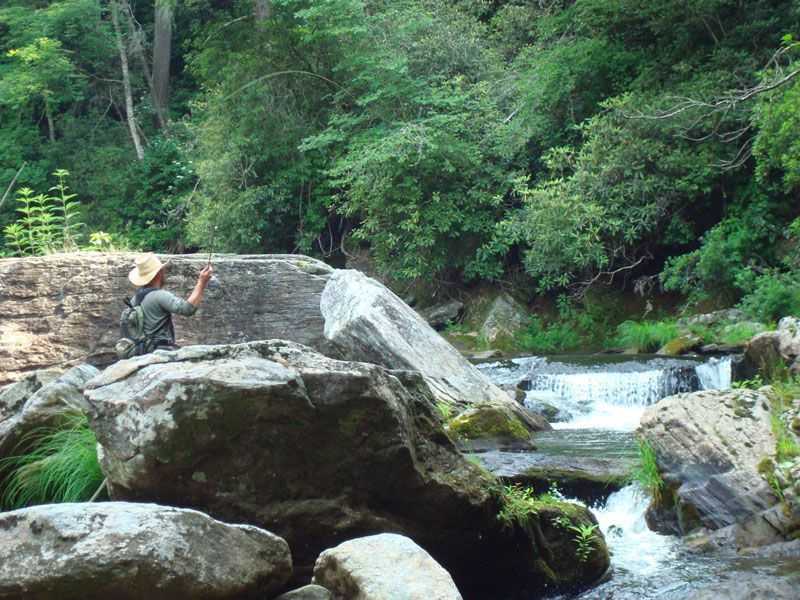Accomplishments and Successes Detailed in Newly Released Anniversary-Edition Report
Shafts of early morning sun filter through forest cover in the Appalachian Highlands. The sunlight catches a glint of swirling line as an angler casts for brook trout in a recently restored stream.
A tiny rush darter finds improved habitat among the riffles and eddies of a restored creek in Winston County, Ala., where excessive sedimentation once placed it in peril of being listed as an endangered species. The creek has one of the last surviving populations of rush darters in the world.
A freshwater mussel has been found in a restored section of Raccoon Creek, Ga., making a rare reappearance after years of absence. While not yet endangered, the mussel, a harbinger of water quality, hasn’t been seen in the creek for years.
The low grumble of an engine and the sound of lapping waves signals the arrival of anglers looking for a black bass in a backwater area of the lower Arkansas River, where a sediment barrier has recently been removed, reconnecting fish and anglers to a much-loved fishing hole.
Paddling past a restored spring now reconnected to Florida’s Hillsborough River, a kayaker surprises a manatee drawn to the fresh free-flowing water.
These are just a few success stories in a decade-long regional effort in the Southeastern United States, led by the Southeast Aquatic Resources Partnership (SARP) to preserve globally significant aquatic species and the habitats they need to survive before they are lost forever. In 2004, 14 state fish and wildlife agencies signed a Memorandum of Understanding (MOU) that acknowledged their official SARP membership and participation to leverage resources and expertise to strengthen conservation of fish and other aquatic resources.
The conservation vision of Gary Myers, former director of the Tennessee Wildlife Resources Agency, SARP was established, “to do for fish what the North American Waterfowl Management Plan did for ducks.” In the 1980s, when waterfowl populations plummeted to record lows, the governments of Canada and the United States developed a strategy to restore waterfowl populations through habitat protection, restoration and enhancement. With the support and involvement of the Southeastern Association of Fish and Wildlife Agencies (SEAFWA), the National Fish Habitat Partnership, and a variety of federal agencies, councils and commissions, conservation organizations and businesses, SARP has served as a successful catalyst and network builder for habitat restoration, conservation and scientific research in the southeastern United States.
These accomplishments and featured habitat conservation case studies are recognized in a recently released 10-year anniversary report titled, “Conserving Fish Habitat From the Rivers to the Sea: The Story of the Southeast Aquatic Resources Partnership.” This report can be read in its entirety by visiting www.southeastaquatics.net.
The Southeast Aquatic Resources Partnership (SARP) will, with partners, protect, conserve and restore aquatic resources, including habitats throughout the Southeast, for the continuing benefit, use and enjoyment of the American people. SARP’s collaborative, regional, multi-agency approach galvanizes the efforts of state and federal agencies, conservation organization and businesses to conserve aquatic habitats from whitewater to bluewater, from rivers to the sea. To learn more about SARP visit www.southeastaquatics.net.
[easy-social-share]
